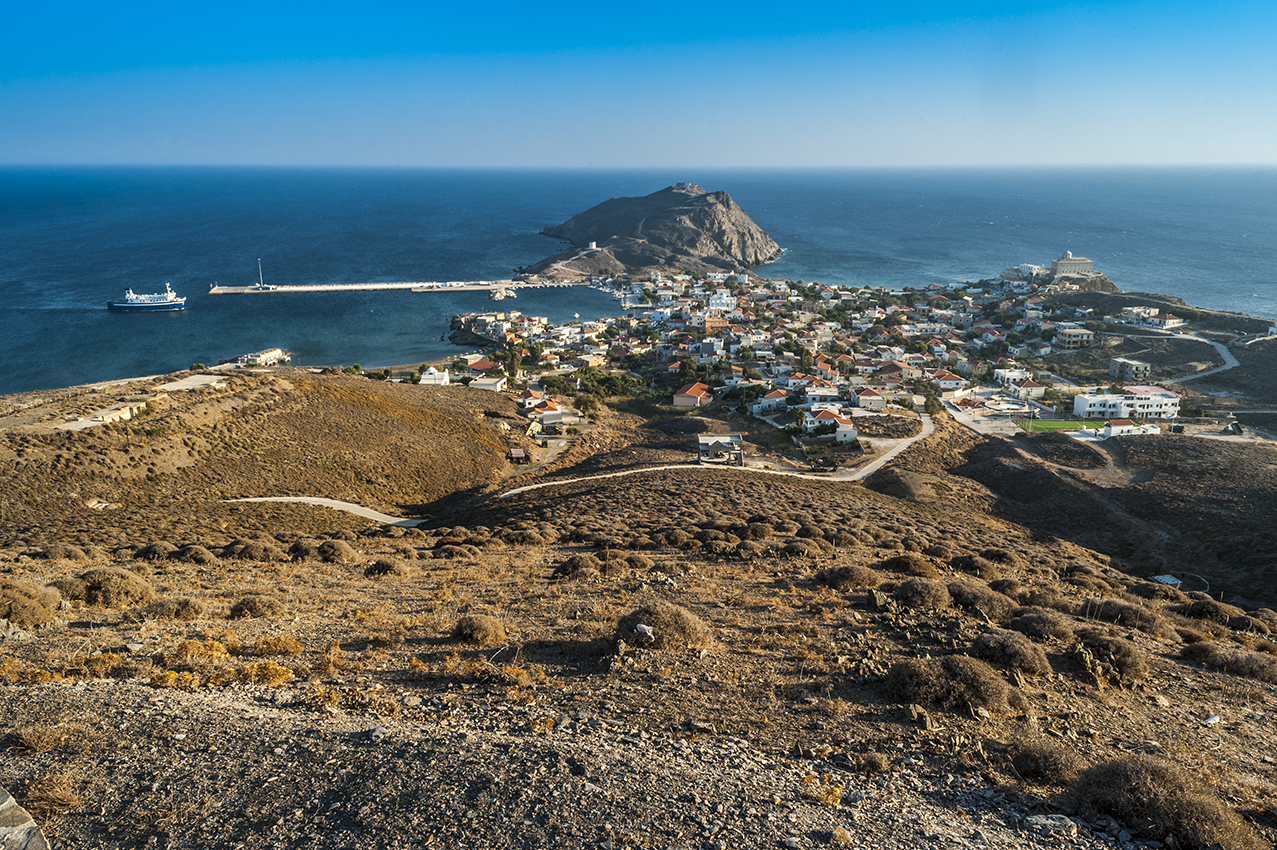The island of Psara (size 42 sq km) is a small island in the Northeast Aegean with a great history. Almost 15,000 people once lived on Psara. However, the Turks killed almost all of the inhabitants in 1821 because they resisted the Turkish occupation. Since then, the island has been rather insignificant. Currently in 2024, the island of Psara has about 400 to 450 inhabitants. There is hardly any tourism. The island is also difficult to reach by ferry.
The island belongs to the North Aegean region and is known for its tranquility, authentic atmosphere and historical significance. The island is an insider tip for travelers who are looking for nature, quiet beaches and relaxation off the beaten tourist track. It is a small island with very little tourism. Here you can still experience the authentic side of Greece far away from mass tourism.
Psara Town: The only place. Very quiet and traditional. Some residents rent private rooms and there is a better guesthouse. There are no long roads, other towns or buses on Psara. Donkey paths can be used for interesting hikes. The locals are happy to help with planning.

Thanasis Christodoulou, Attribution, Σύνδεσμος
Ferry Psara
The island can be reached by ferry several times a week from the Chios island. There are also sometimes less frequent ferry connections from Psara via the Limnos island to Kavala (Northern Greece). Ferries from Psara to Piraeus or another Athenian port are currently only available in summer, if at all. Psara also has no airport. Since there is only one town and hardly any roads, the island also has no bus. You stay in the main town of the island, Psara, or go on foot.
Map of the island of Psara (Greece)
|
Most of the inhabitants live in the south, the east is sparsely populated. Chios is the large neighboring island. The island of Antipsara is about 2 km away and is almost uninhabited; according to the last census, Antipsara has just 4 inhabitants. |
Psara offers many small paths that lead through the hilly landscape. Numerous routes offer spectacular views of the Aegean Sea and the neighboring island of Antipsara.
Enjoy the unspoiled nature and discover remote bays and viewpoints. Lizards and geckos are common and feel at home in the rocky surroundings.
Bird watching is particularly popular as the island is home to many species of birds. Numerous species of birds can be discovered on Psara and the surrounding islands such as Antipsara, examples:
Seabirds:
Gulls (e.g. Yellow-legged Gull)
Shearwaters (e.g. Yellow-billed Shearwater)
Cormorants
Birds of prey:
Peregrine falcons
Common buzzards
Songbirds:
Sparrows, larks and swallows, which are particularly present during migration.
Good places for bird watching
Coastal areas and cliffs:
The rocks and cliffs along the coast are ideal habitats for seabirds.
Mavri Rachi:
A hill with a wonderful view where birds of prey and migratory birds are often seen.
Wetlands and small bays:
During migration, many birds use these areas to rest.
Flora Psara
1. Wild herbs and shrubs
Thyme, rosemary and oregano:
These aromatic herbs grow wild on the island and characterize not only the landscape but also the local cuisine.
Sage and marjoram:
Other herbs that are commonly found.
Maquillage shrubs:
A mixture of evergreen, dense shrubs such as rockrose and mastic (Pistacia lentiscus).
2. Flowering plants
Rockrose:
With their pink or white flowers, they add a splash of color to the barren landscape.
Wild orchids:
Rare orchid species can be discovered in spring.
Cretan tulips:
A speciality that blooms in sheltered places in spring.
3. Trees
Olive trees:
Although Psara does not have significant agriculture, some olive trees grow in protected areas.
Fig trees:
These are scattered around the island and provide fruit in summer.
Tamarisks:
These salt-tolerant trees are found near the coast and provide shade on some beaches.
Tavernas
The tavernas on Psara Island offer an authentic Greek dining experience, where fresh, local ingredients and traditional recipes are the focus. Many of these tavernas are located in picturesque locations with stunning sea views and offer guests the opportunity to enjoy Aegean cuisine in a relaxed atmosphere.
Do you have any feedback, an addition, found an error or a comment? Send us an email to: mail@griechenland-insel.de